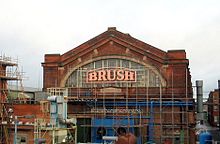On this day in Loughborough … 1874
30 November 2020
Monday 30th November 1874 – (published 3rd December 1874)
‘On Monday last Loughborough was visited by one of the densest fogs remembered. Candles and lanterns were resorted to to get around, horses were led by their drivers carrying lanterns.’
Snippets of history from the Loughborough Advertiser, Loughborough Herald and Loughborough Monitor, collated by Loughborough Library Local Studies Volunteers. Source: Matthew’s Local Newspaper Extracts Vol. 1
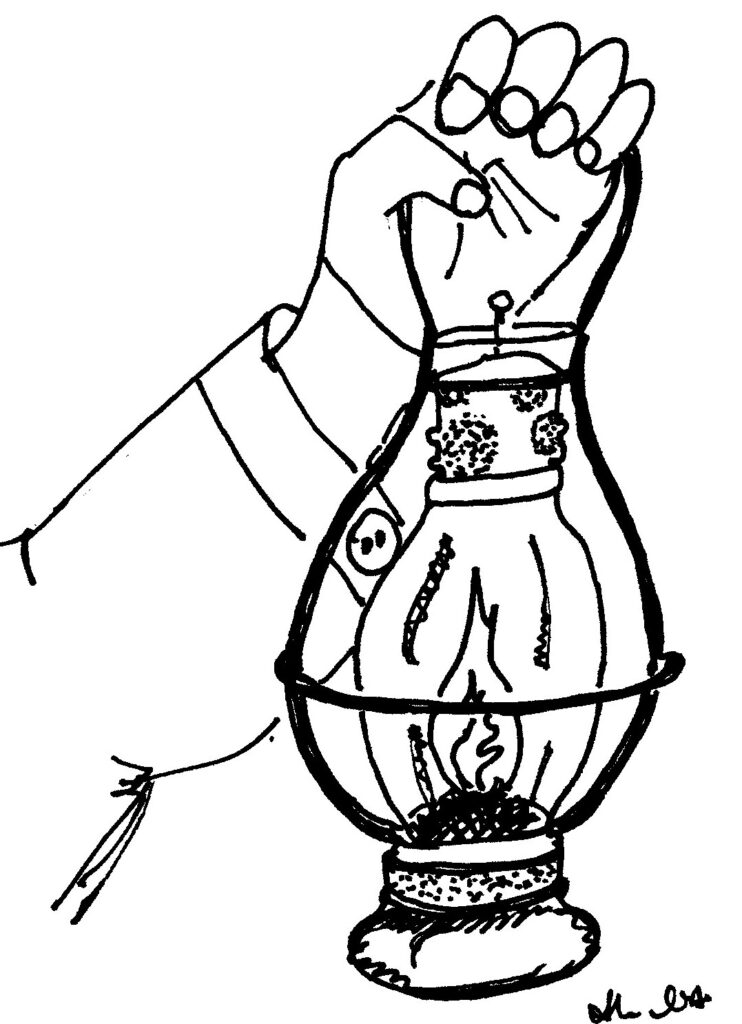
On this day in Loughborough … 1873
27 November 2020
27th November 1873
Thomas Griffin farmer of Sheepshead and Wm Adkin a labourer, were charged by Mr Riley, Sanitary Inspector, with depositing night soil on the highway. From the evidence it appears that several persons had accidentally fallen into it. They were fined 40/- with costs.
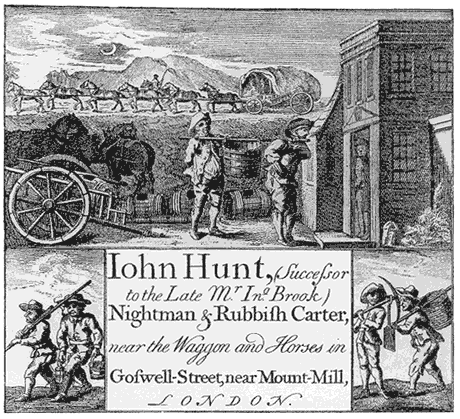
Article provided by Loughborough Library Local Studies Volunteers.
Source: Matthew’s Local Newspaper Extracts Vol. 1
Brush workers filmed in November 1900
20 November 2020
Old film negatives found in a basement in Blackburn proved to be a ‘treasure trove of history’ which included footage of workers leaving Brush Electric Company’s Falcon works site in 1900.
The ‘factory gate’ film was made by Sagar Mitchell and James Kenyon, two of the earliest in the UK to take advantage of the commercial potential of ‘moving pictures.’ Mitchell (who sold photographic equipment) and Kenyon (a manufacturer of penny-slot machines) set up a motion picture company in 1897, less than two years after the first audiences paid to watch films shown in Paris by the Lumière brothers.
Mitchell and Kenyon travelled the UK filming war dramas, rugby matches and other ‘scenes of local interest’ such as the factory gate films. These were then sold to travelling exhibition companies, who screened them at markets and fairs. Loughborough’s films were shown at the November fair in 1900.
The film company’s commercial ‘window of opportunity’ was relatively short, with their known archive ending in 1911, though the company itself continued until 1915.
The two-minute clip of the Brush workforce leaving the Meadow Lane site was one of around 800 negatives found in 1994 in the company’s former Blackburn premises. The British Film Institute bought the archive in 2000, restoring and making many of them available to view for free on their website. The collection has now been listed on the Unesco ‘UK Memory of the World’ register created to support historical archives.
The BFI website describes the Brush film as ‘a well-staged exit of workers’ which ‘stands out for its composition, and for the relatively wealthy, well-dressed, well-behaved male crowd steadily snaking past the gate. Note also the profusion of bicycles.’
A second clip, filmed at the same period, shows workers leaving the Cartwright & Warner hosiery works on Queen’s Road.
Is it my imagination or do the youngsters in these ‘crowds’ pass by the camera only to double back again? Captivated by the new phenomena of ‘moving pictures,’ no doubt. How very astute of Messrs Mitchell and Kenyon, then, to film images that would draw the self same crowds to part with money to watch themselves at the November fair!
Alison Mott
Sources:
Website of the National Fairground and Circus Archive [accessed 27.11.2020]
BBC News website.
A history of Loughborough’s battle with fire – 1500 to 1667
15 November 2020
by John Gibson
Disastrous Fires
From the mid-1500’s onwards, with the town being built predominately of timber, all writers mentioning Loughborough speak of it as having suffered much from fire. Amongst others, the editor of the ‘Magna Britannia’ in 1720 says:-
‘Of late years it hath undergone many calamities by fire, insomuch that it hath been almost quite destroyed by this merciless element.’
Nichols, writing in about 1800, doubts if Loughborough can be ‘supposed to be the second market town of note in the county’ on the grounds that ‘it hath been much diminished by fire.’
The earliest record of firefighting appliances in the town is this entry in the parish register:
‘1552 November 23 John Goodwyn sonne of Will’m. Goodwyn being a mercer and grocer in London did gyve x1 buckettes of lether wch are in the churche of Loughborwoe in Ao 1592 to the use and benefit of this town.‘
In 1607 the Burton Feoffees paid for mending the leather buckets.
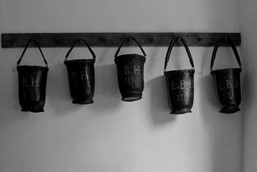
The 17th century was remarkably disastrous for extensive fires in Loughborough. The Parish Register preserves this record of an outbreak in June 1622:
‘Memon. That the fourthe day of this month ther was a verie greevous fyer in this towne, wch burnte downe to the ground manie houses. Huigh, the sonne of Symon Ffoster, Elizabeth, the daughter of Thos. Greenwood (bur. the vth day) these two children weare burnte wth the aforesaid fire.‘
In 1642 there was
‘Paid. to 24 men that watcht and worked at the Fyer at Cutler’s house twelve shillings’;
‘to John Reynolds for a Pound of candles for their use four pence’; and
‘to Robert Sharpe for gathering ye bucketts at the Fyer sixpence.’
Practical sympathy with sufferers through fire in other places was expressed in 1653 when £4 17s 5d was collected in Loughborough towards a relief fund for losses occasioned by a disastrous fire at Marlborough.
The most destructive fires in the whole of Loughborough’s history occurred in 1666 on an eventful October day only a few weeks after the Great Fire of London. Ralph Hope of Coventry, writing on October 8 of that year to Joseph Williamson of the ‘London Gazette’ says:
‘On Friday the 5th a lamentable fire happened at Loughborough, a considerable town in Leicestershire; it destroyed nearly 200 houses, and had not the wind turned, might have destroyed the whole town; it began in a kiln.’
Writing again on October 17th he adds
‘The fire at Loughborough was very strange: a flake of fire was seen to fly from the house first on fire, 200 yards, over several thatched houses and a great rick of barley, without hurting them.’
Rather curiously, the only reference to this event at the time in the Parish Register is this brief entry:-
‘Oct 5th. This day ye great fire began at Thomas Webster’s house and bourned to Edward Blores in ye Pinfould Gate, sad to behold.’
Another destructive outbreak, however, occurred the following November, and the two fires were the subject of a brief issued by King Charles II, dated March 1, 1667 and published at the Parish Church:
‘Whereas, we are credible given to understand, as well by the humble supplication and petition of our poor distressed subjects that upon Friday, the 5th day of October last at Loughborough aforesaid, by the providence of Almighty God, there happened, about 12 o’clock in the day time, a sad and lamentable fire which, by the space of two hours, burnt and consumed down to the ground 50 dwelling houses, with malt-houses, barns, stables, kilns, and other out-houses thereunto belonging, containing 230 bays of buildings, with much malt, corn, grain, and hay therein; together with many stacks, ricks, and hovels of corn and hay, to the value of £1,924 1s 4d. And that, at Loughborough aforesaid, there happened another fire; which burnt to the ground, in a short time, seven bays of buildings; some of them filled with corn; and the loss did amount thereby to the sum of £50 10s 6d.‘
The sympathy of Leicester people towards their stricken neighbours is shown by the Corporation subscribing £15 to relief of the sufferers.
It must have been these two calamities which convinced the town that better fire prevention methods were called for, and a fire engine was built, apparently a homemade one. Notwithstanding these disastrous experiences another eighteen years passed before the town was provided with better means of dealing with fires.
John Gibson is a member of Loughborough Library Local Studies Volunteers and the author of ‘Loughborough’s Battle Against Fire 1592-1974’. Read about his book here.
Brush at Brighton
6 November 2020
by Tony Jarram
This article is a precis of a study taken during the official centenary year of the Brush Electrical Engineering Company Ltd in 1979. This was followed by additional research by the writer to support the 1982 Centenary of the Brighton Electricity Scheme.
The Brighton Scheme
1982 marked an important centenary in the history of electric lighting in the UK. In 1882, a modest sixteen Brush-built arc lamps were switched on in Brighton, bringing a permanent supply system to the town and heralding the first municipal electric lighting scheme in the country.
Two trials had been carried out the previous year. The first involved the illumination of the promenade concert at the Royal Pavilion using a Siemens dynamo driven by a steam roller. The second trial – by Robert Hammond – was far more ambitious, using a 1.75 mile circuit carrying 16 arc lamps, in series, supplied with current from a Brush arc-lighting dynamo.
Arthur Wright, after a short employment at the Anglo American Brush Electric Light Corporation’s Victoria Works in Lambeth, was placed in charge of the display. He was later employed as inspection electrician to the Hammond Company of Brighton.
Wright could not have had a better benchmark to emulate than Anglo American Brush Electric Lighting Corporation. The corporation was established in London to exploit the inventions of Charles Francis Brush of Cleveland Ohio, a pioneer of electric lighting. Brush’s first successful project was in 1877, to illuminate the exterior of the residence of Dr Longworth of Cincinnati, followed by the introduction of 4-light sets with a generator. Several of these sets were installed in Wanamaker’s store in Philadelphia. From these initial installations the fame of Brush grew and he was soon manufacturing arc lamps and dynamos to his own design for a number of prestige projects. These included public lighting systems for Madison and Union Squares in New York and a small system for Cleveland Ohio, his hometown.
Following the rapid progress of the Brush system in the United States, Mr Thomas J. Montgomery – representing Brush – came to England to negotiate with financial people in London to exploit the Brush Patents. Offices of a new company – Anglo American Electric Light Company Limited – were established at 74 Hatton Gardens E.C. Two patents were taken out in England, one for the construction and regulation of arc lamps and one for prolonging the carbons in arc lamps.
In 1880 the Anglo American Brush Electric Light Corporation Limited was formed to extend the operations of the 1879 Company. Its manufacturing unit was established in the former works of Messrs. Powis, Western and Company at the Victoria Works, Belvedere Road, Lambeth. In 1880 another manufacturing premises was acquired from the Woollen Cloth Printing Company in Borough Road. This factory specialised in the manufacture of dynamos.
The Brush system of Electric lighting expanded in the couple of years preceding the Brighton Scheme and it was during this period thar Arthur Wright would have learned his craft.
Systems introduced during this period included:
1880: Albion Mills, Halifax; Paddington Railway Station, Great Western Railway, London; Royal school of Mines, Jermyn Street, London; South Kensington Museum, London: Messrs. Denny Bros. of Dumbarton, shipbuilders (12 lamps); Messrs. Peak Frean and co. (32 lamps); The Barrow Shipbuilding. Company (65 lamps); Bass & Company, Burton-on-Trent (16 lamps); Great Eastern Railway (16 lamps); the City and Guilds Institute and a searchlight of 47,000 standard candle power for the Royal Navy;
1881: Thames Embankment (32 lamps); House of Commons (12 Brush lights and 34 Swan incandescent lights); New Bridge Street London; Ludgate Hill London and St Pauls Churchyard London.
It is important to note at this stage that the Victoria Works was operating as a power station in addition to being a manufactory of the Brush equipment. The Brush system also – and perhaps obviously – also illuminated its own works.
Returning to Arthur Wright and Hammond Company at Brighton, the electric lighting trials excited the residents of Brighton so much that it was decided to install a permanent system.
The power station was situated in the yard of Reed’s Iron Foundry in Gloucester Road and customers were charged 12 shillings (60p) per lamp-week to have their premises illuminated.
By March 1882 demand had increased to 40 lamps and the method of charging customers was altered to 6 shillings (30p) per lamp-week plus 1s 6d (7.5p) per lamp carbon consumed. This was probably the first instance of a two-part tariff.
Later in 1882 the engineer in charge of the scheme, Arthur Wright, introduced incandescent lamps from the arc circuits. The system was controlled by a “Volt Boy” who operated a carbon resistance connected as a shunt across the field of the dynamo. The system was unreliable and slow, especially when the boy fell asleep. As a result of the power outages the boy was replaced by an automatic device.
Demand grew rapidly and in 1885 a new power station was built next to the old one and equipped with Brush Dynamos driven by a Fowler steam engine. The plant was further extended again using Brush dynamos. To date the dynamos, arc lamps and other electrical equipment would have been manufactured at the Victoria Works of the Anglo-American Brush Electric Light Corporation on Belvedere Road, Lambeth. It is highly likely that incandescent lamps would have been to the design of George Lane-Fox, who was employed by Brush at Port Pool Road, London.
In 1890 a new power station was erected in Brighton’s North Road, this time using four Williams-Goolden generating sets and, by 1904, 15 dynamos made by Electric Construction Co. and Bruce Peebles. As demand increased, a new station was built in 1904 at Southwick alongside Shoreham Harbour . This station used coal obtained mainly from Tyneside and supplied by a fleet of colliers. The first cargo of coal was delivered by the ‘James Tennant.’ The new power station should have been ready to load on 1st September 1904 but did not operate until one year later – September 1905 – with the official opening not until 16th June 1906. Delays were due to a number of reasons, including flooding. The station was far from quiet and the noise in the turbine hall was described ‘like that of an express train thundering through a tunnel.’
Brush were not involved in the turbines that were used over the following years. Mention must be made of the former Brush man, Arthur Wright, whose name was chosen by Brighton Corporation for the first of their two colliers in 1936. Its maiden voyage was to carry 1400 tons of ‘Pelaw Main‘ coal to the power station.
Brush became involved in power generation again in Brighton when the power station became home to the now famous trio of Brush Ljungstrom radial flow turbines. The first was a 37,500 kW unit in 1937 (Brighton No.1), another of the same type in 1939 (Brighton No.5) and a 50,000 kW unit in 1947 (Brighton No.6). No. 6 was the largest Brush/Ljungstrom turbine ever built. All three were built in Loughborough at the Falcon Works of the Brush Electrical Engineering Co. Ltd.
It is interesting to note the Brush’s commissioning engineer, Archie Fisher, stayed at Brighton working with the turbines he had installed.
When No. 6 turbine was commissioned in December 1947 the capacity of the power station was 190 MW.
The first pile for a new station was driven on 25th November 1947. This new station was to become Southwick “B”, making the previous station, with the Brush turbines “A”.
On the 13thAugust 1947 The Electricity Bill received Royal Assent (Electricity Act 1947), bringing the supply industry into public ownership. Two days later The British Electricity Authority (later renamed the Central Electricity Generating Board) was established with responsibility for the generation and transmission of electricity.
On the 1st April 1948 Southwick “A” and “B” stations passed from the ownership of Brighton Corporation to the new authority. Shortly afterwards Southwick “A” and “B” power stations became Brighton “A” and “B”
In March 1969 Brighton “A” was partially closed. Two of the Brush turbines – No.5 and No.6 – remained on standby, but on reduced capacity due to blade wear and tear.
Brighton “A” was officially closed on 15th March 1976 and is now demolished.
Brush also directly or indirectly supplied other equipment to Brighton.
Although Brush played no part in the building of the first public electric railway – the Volks Railway, two former electric pier cars of 1899 from the Southend Pier Railway were later added to the Volks cars to supplement the service. These cars were originally single deck trailer cars at Southend but were fitted with motors from redundant battery electric vehicles and operated as fleet No.8 and 9 along the Brighton seafront. No.8 carried the lettering “Falcon Works, Loughborough” on two of its axle boxes.
Brush was a prolific builder of tramcars and was the second largest manufacturer of this mode of transport in the UK and the biggest producer of trucks (wheel sets and frames). Brush supplied a batch of its tramcars to Brighton Corporation in 1903 (Fleet Nos. 31 to 40).
Tramcar production followed a long association with the manufacture of coachwork in Loughborough which dated back to c.1851. Production was initial horse drawn vehicles by Henry Hughes at his Falcon Works alongside the Loughborough Navigation. The company moved to a new factory alongside the Midland Railway, later becoming the Falcon Engine and Car Co. Ltd until amalgamation with the Anglo American Brush Electric Light Corporation in 1881 to become The Brush Electrical Engineering Co. Ltd.
Coachwork over these various ownerships included horse buses, railway rolling stock, horse drawn and electric tramcars, horse and motor buses, trolleybuses, motor cars and lorries and even aircraft.
Brush supplied motor buses to the Brighton based Southdown Bus Company between 1915 and 1929.
The first was a 32-seat bus on a Caledon chassis. Subsequent buses used chassis by Tilling Stevens, Daimler and Leyland. One of a 1929 batch of Leyland ‘Titan’ TD1 open top buses (No.813) was preserved by the company. Brush also supplied bodies unattached to their chassis for assembly by the operator.
Final mention should be made of Brush equipment for marine use . Easily overlooked are the electrical installations on vessels including the gravel dredger ‘Arco Thames’, a regular visitor to Shoreham at the time of the original project.
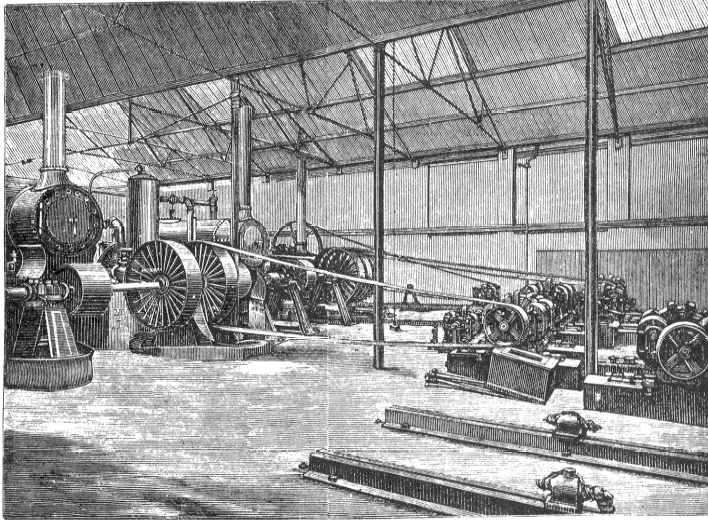

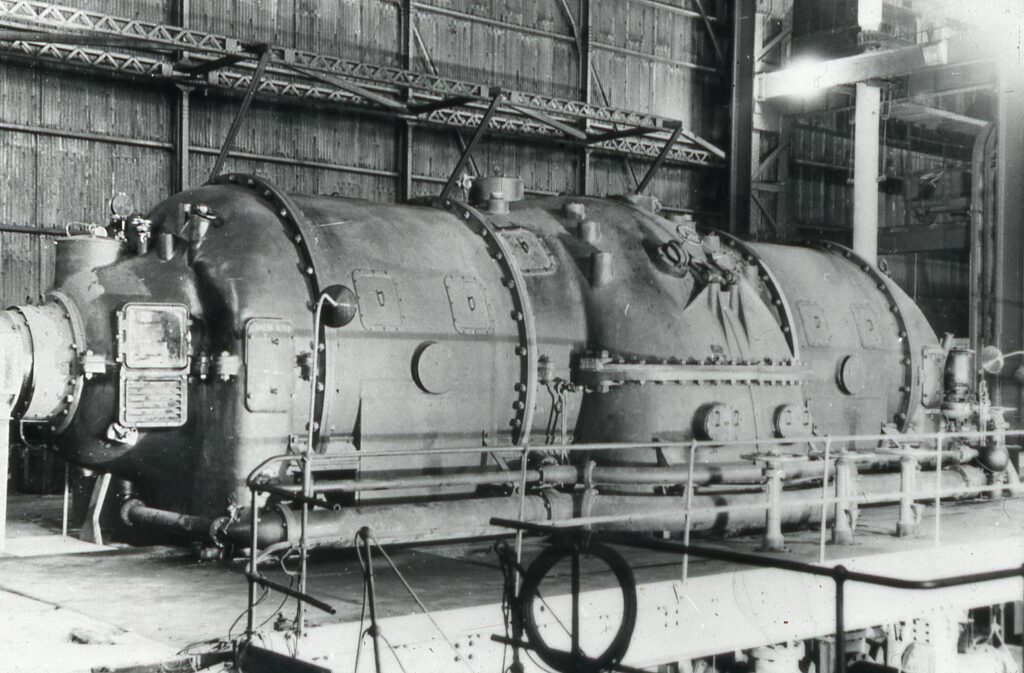
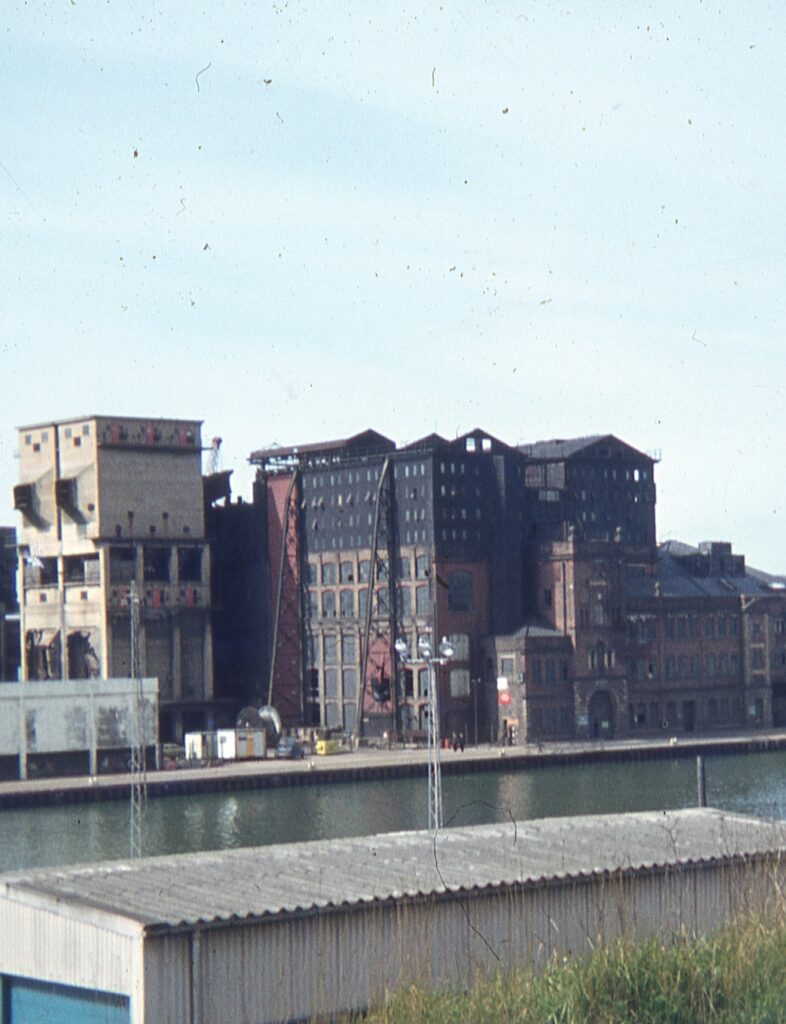
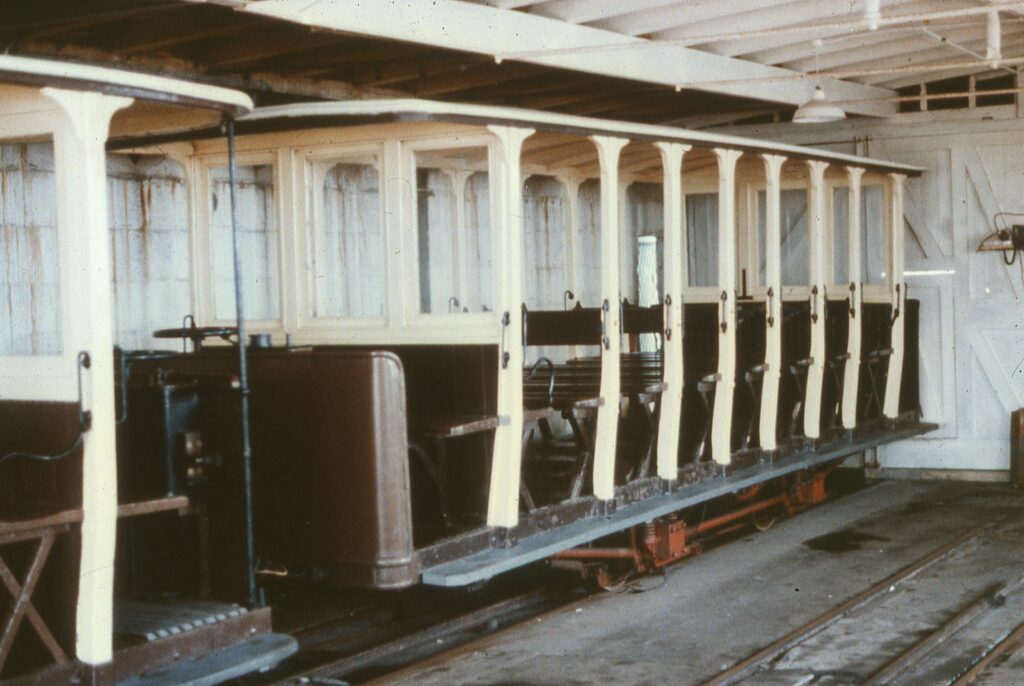
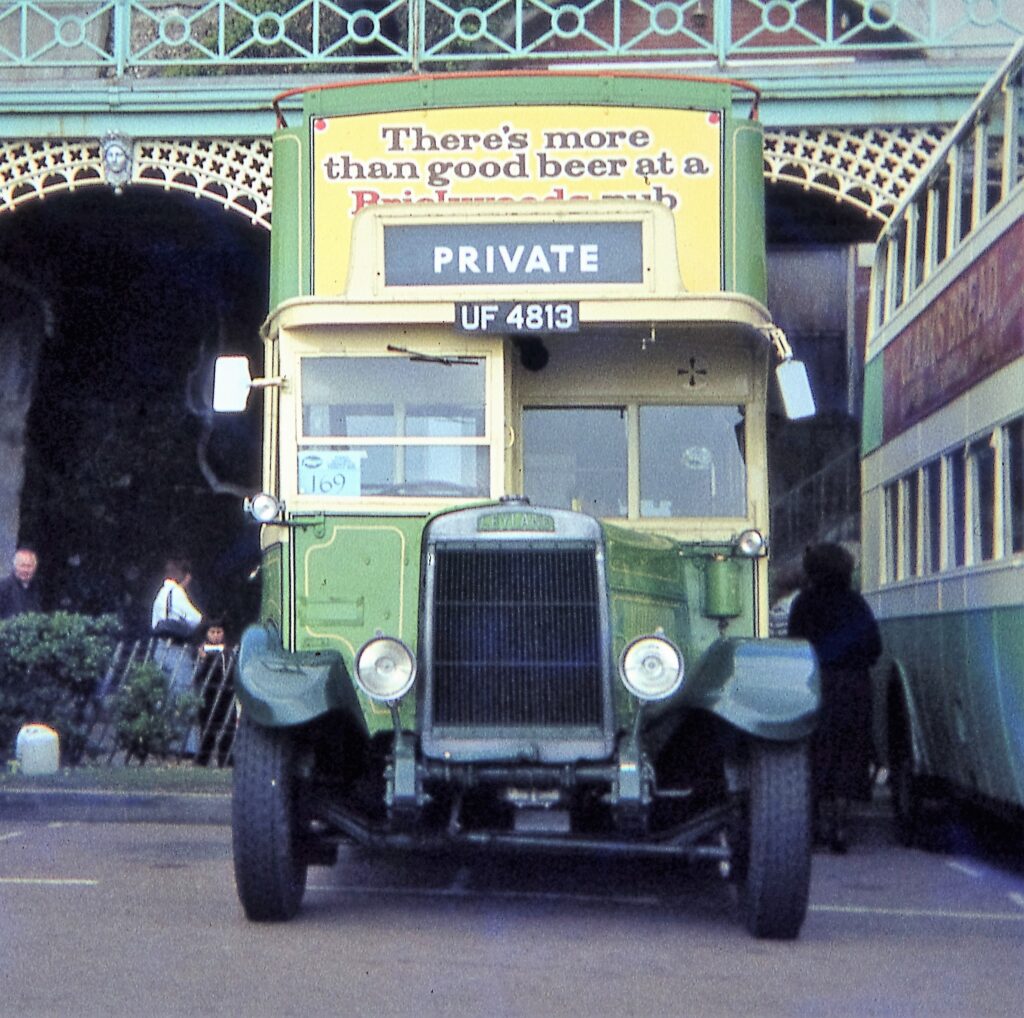
Bibliography:
CEGB: Brighton “A” Power Station 1904-1976 – Central Electricity Generating Board, South Eastern Division (1976)
Jarram A.P. Brush at Brighton, Brush Transport Enthusiasts Club (1979)
Acknowledgements:
Note: The status of the following relates to the time of the original project in 1979.
Ayling E.W. Ass. Station Manager C.E.G.B. Brighton Power Station, Barrell R.A. Shoreham Port Authority, Fisher A. Retired Turbine Erector, Hutt A. retired Brush employee, Jarram E.A. retired Brush turbine employee, Maskrey G.J. Station Manager C.E.G.B. Brighton Power Station, Morgan J. retired Brush employee, Read Norman Southdown Enthusiast’s Club, Wright. M. Manager Volks Electric Railway.
Some of the kind people who helped with my original project are no longer with us. This article is dedicated to their memory.
Tony Jarram
Honorary Member of The Loughborough Local Studies Volunteers Group
